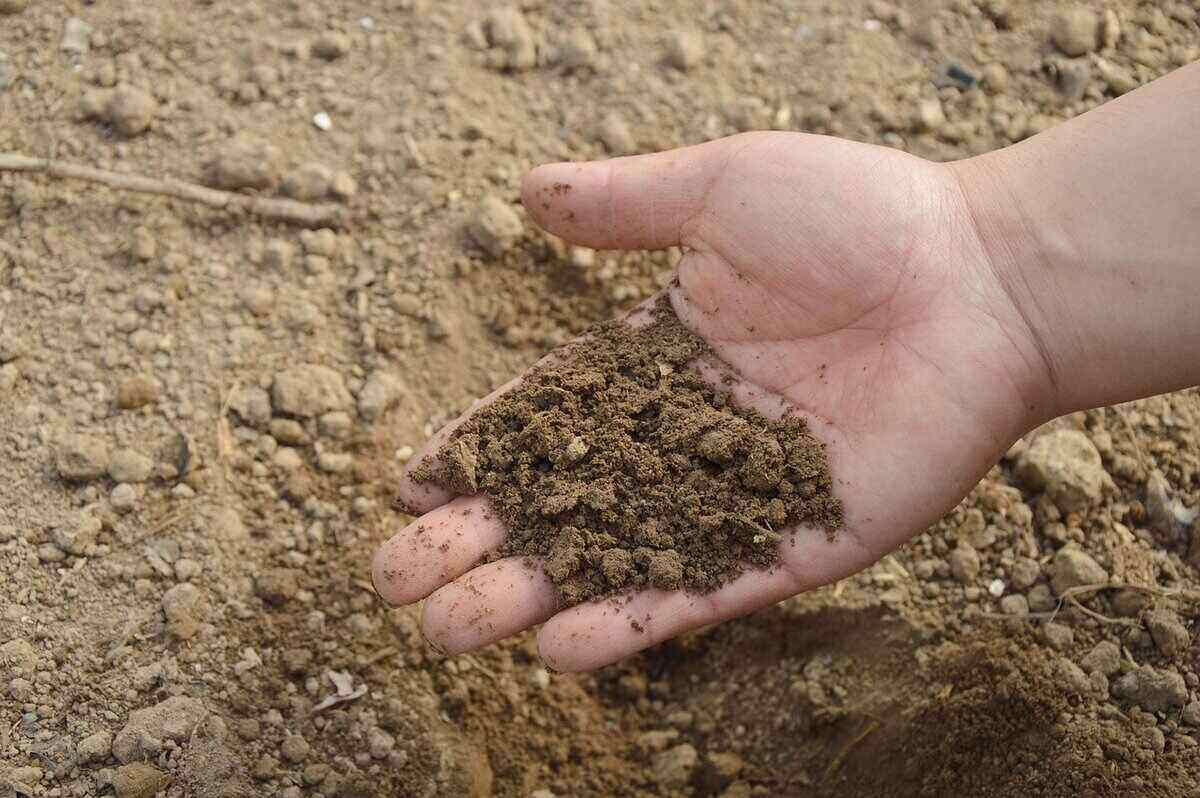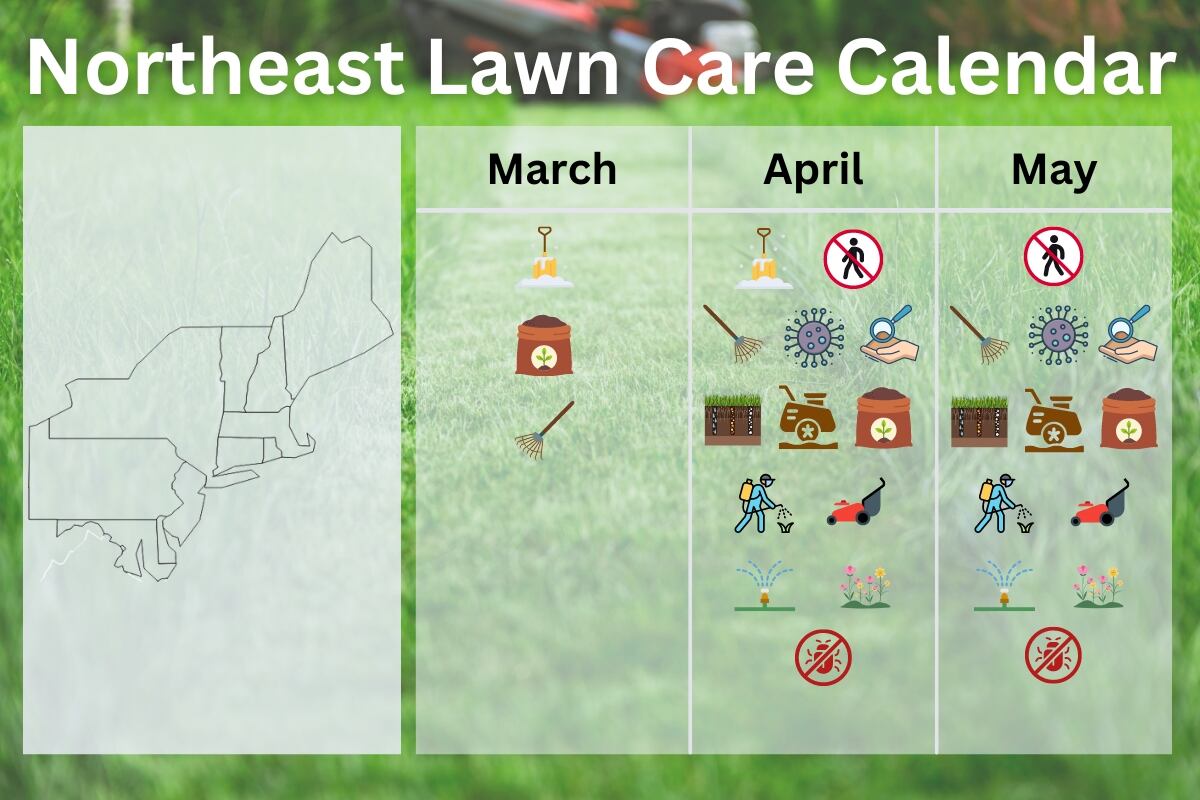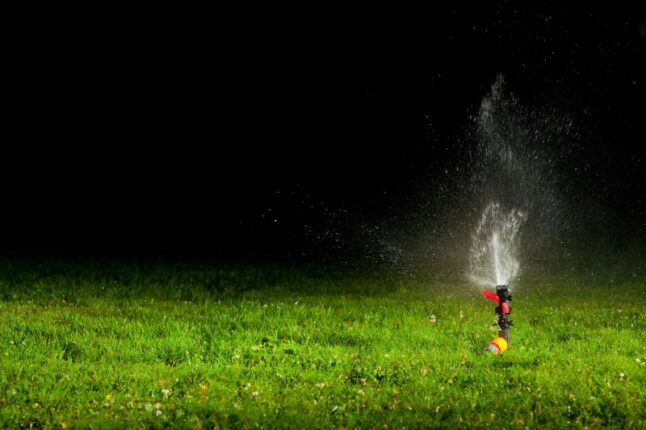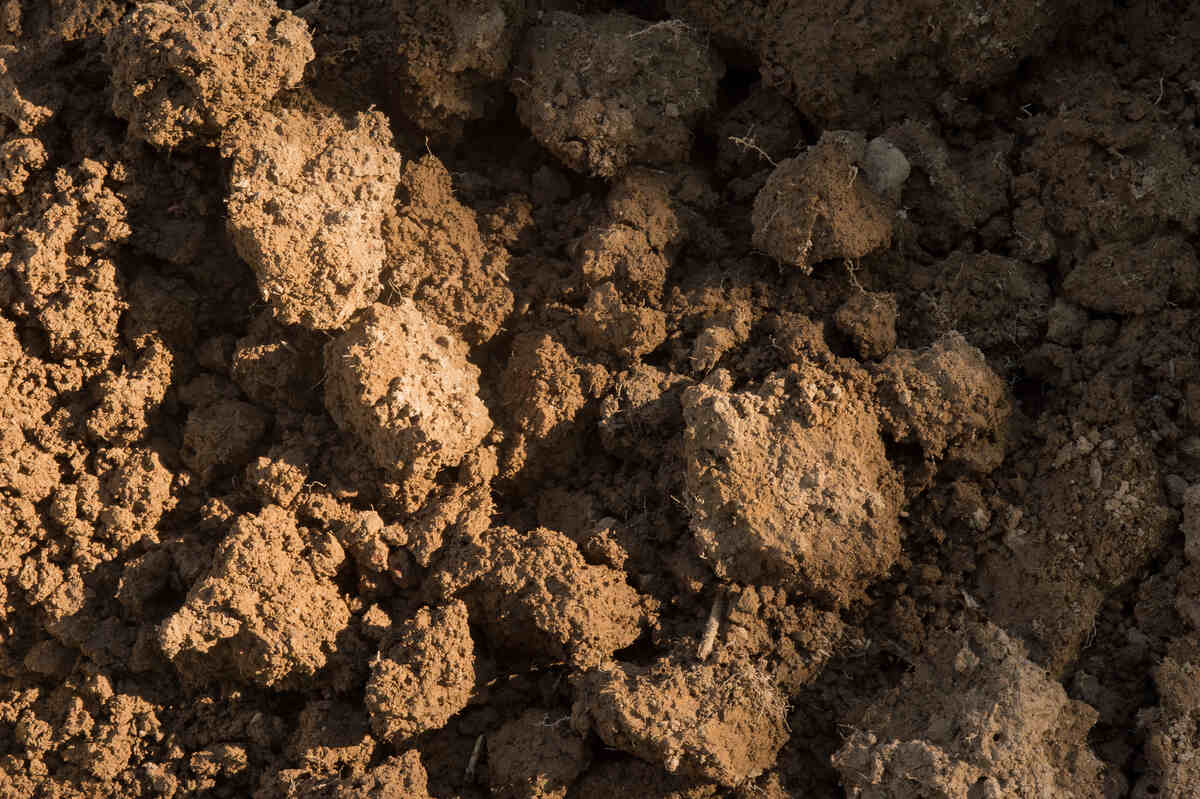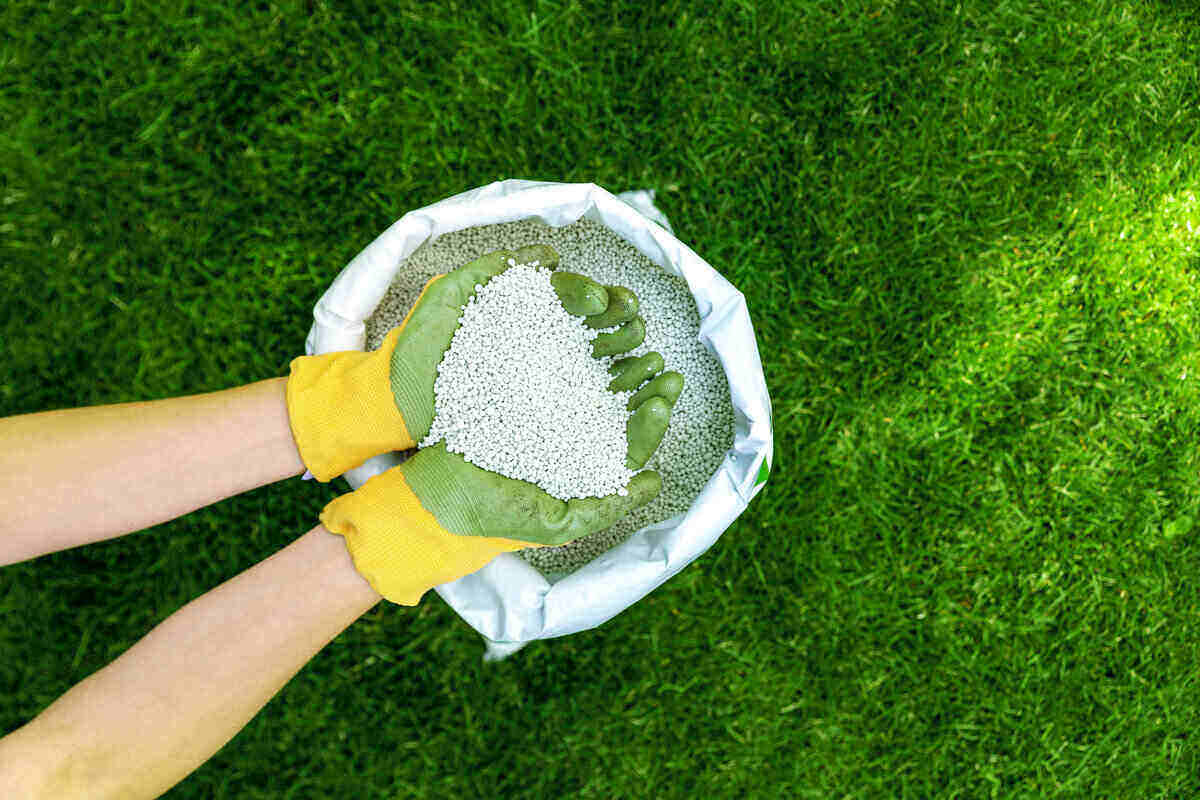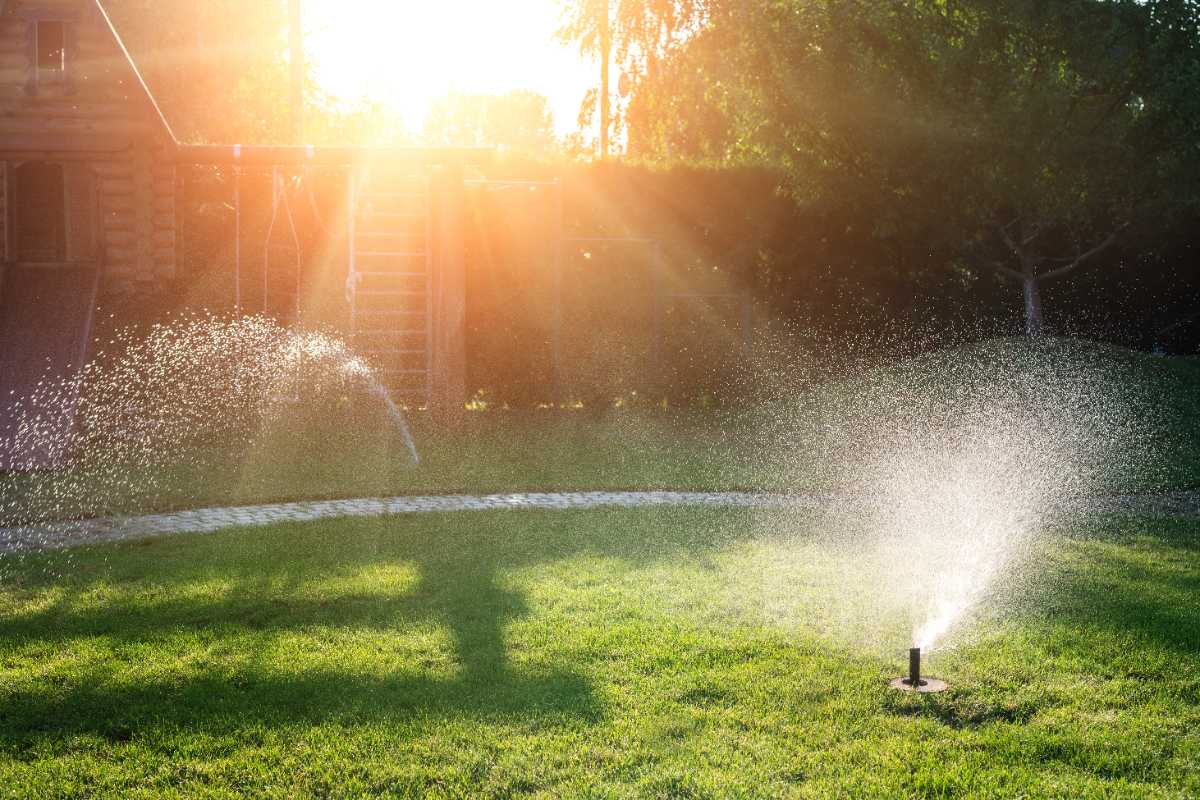
Determining how often to water your grass in summer is easy if you know which factors to consider. The answer will depend on your grass type, soil type, and climate zone.
Stop overwatering your lawn in summer for fear of it drying out. We consulted an expert who can help you determine the right summer watering frequency for your lawn. Plus, we have a calculator to make things even easier for you.
Consider the following factors when using this calculator to tailor your summer watering plans:
- Grass Type: Cool-season vs. warm-season
- Soil Type: Sandy drains fast; clay holds water; loamy is best
- Climate Zone: Arid vs. humid vs. moderate
- Lawn Age: New lawns need frequent light watering; established ones need deeper and less frequent watering
Summer Lawn Watering Schedule
Your Personalized Watering Schedule
💡 Important Tips:
- Best time to water: Early morning (5 AM – 8 AM) to reduce evaporation
- Check the weather: Reduce watering after rainfall
- Monitor your lawn: Adjust based on grass appearance and soil moisture
- Deep watering: Less frequent, deeper watering is better than daily shallow watering
Watering Frequency by Grass Type

Just because it’s summer doesn’t mean you can saturate your lawn with water. This is a common mistake you must avoid whether you have warm-season grass or want to keep your cool-season lawn out of dormancy.
“Many homeowners frequently water their lawns beyond necessary amounts,” says Sushant Mehan, assistant professor at South Dakota State University, “leading to excessive moisture accumulation in the soil and subsequent surface pooling.”
Cool-Season Grass (Northern Regions)

Thriving in northern regions, cool-season grasses like tall fescue, Kentucky bluegrass, and perennial ryegrass grow most actively in spring and fall. They also stay green in spring and fall but naturally go dormant during summer.
| Watering for Cool-Season Grasses |
| Frequency: 2-3 times per week Amount: 0.5 inches per session Weekly Total: 1-1.5 inches |
Warm-Season Grass (Southern Regions)

During the hot summer months, warm-season grasses, such as Bermudagrass, Zoysiagrass, and St. Augustinegrass, reach their peak growth.
These drought-tolerant grasses thrive in heat, making them ideal for southern regions. Deep and less frequent watering can help maintain their color and density.
| Watering for Warm-Season Grasses |
| Frequency: 1-2 times per week Amount: 0.75-1 inch per session Weekly Total: 1-1.5 inches |
Note: Lawn care doesn’t stop at watering. Regardless of your grass type, hiring a local lawn care pro can help ensure your lawn gets all the care it needs during summer and beyond.
Adjusting Water Frequency by Soil Type
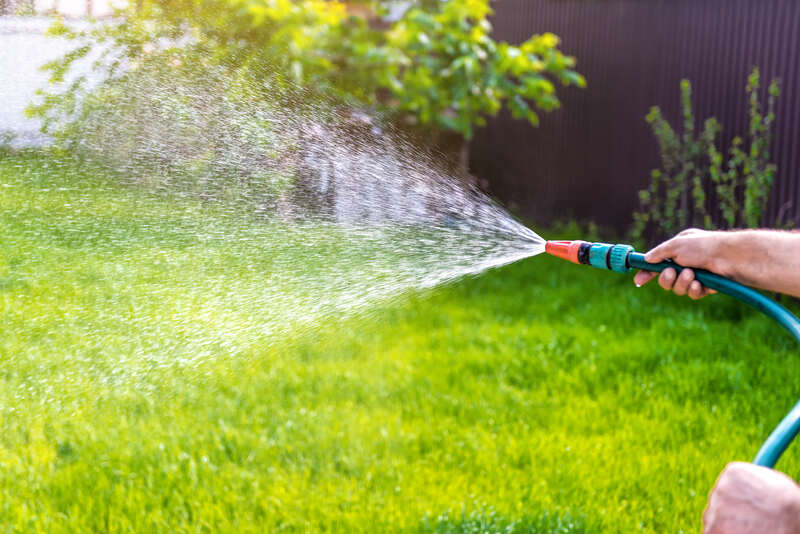
Your soil type also plays a big role. According to Mehan, watering based on soil conditions can stabilize soil moisture levels, preventing drought conditions.
Sandy Soil: Water 3-4 Times Per Week
Sandy soil has loose particles that allow water to drain rapidly, preventing soggy roots. But if water doesn’t stay in the root zone for long, you’ll need to do more frequent, shallow watering to hydrate your grass.
| Watering for Sandy Soil |
| Frequency: 3-4 times per week Amount: 0.3-0.4 inches per session Weekly Total: 1-1.2 inches |
Clay Soil: Water 1-2 Times Per Week
With tiny, compact particles, clay soil can retain moisture for longer periods. But its slow water absorption makes it more prone to surface runoff and standing water. You can do the cycle and soak method where you divide each watering session into shorter cycles, with around a 30 to 60 minute break in between.
| Watering for Clay Soil |
| Frequency: 1-2 times per week Amount: 0.75-1 inch per session Weekly Total: 1-1.5 inches |
Loamy Soil: Water 2-3 Times Per Week
With a balanced mix of sand, silt, and clay, loam soil offers both good drainage and adequate moisture retention. It’s more forgiving if you miss a watering session.
| Watering for Loamy Soil |
| Frequency: 2-3 times per week Amount: 0.5 inches per session Weekly Total: 1-1.5 inches |
Summer Watering Frequency by Climate Zone

Another important factor for determining how often to water grass in summer is the local climate. For native grasses, Mehan says they “are often better adapted to local climate conditions and typically require less water once established.”
Here’s the summer watering frequency for the three major U.S. climate zones:
Hot, Arid Regions (Southwest, Southern California)
Lawns in hot, dry climates like Arizona, Nevada, and inland parts of Southern California face intense sun, high temperatures, and very low humidity. These regions rarely experience summer rainfall, so your grass will depend mostly on irrigation for survival.
| Watering for Hot and Arid Regions |
| Frequency: 2-3 times per week Amount: 0.4-0.5 inches per session Weekly Total: 1-1.2 inches |
Hot, Humid Regions (Southeast, Gulf Coast)
Florida, Georgia, and other states in the Southeast experience high temperatures in summer, paired with high humidity and frequent afternoon storms. This moisture-heavy environment can slow down evaporation, naturally providing some of your lawn’s watering needs.
| Watering for Hot and Humid Regions |
| Frequency: 2-3 times per week Amount: 0.5 inches per session Weekly Total: 1-1.5 inches |
Moderate Summer Regions (Pacific Northwest, Northeast)
Pacific Northwest and Northeast regions like Washington, Oregon, and New York enjoy milder temperatures in summer. Lawns in these areas typically don’t face extreme heat stress, making watering more manageable.
| Watering for Moderate Summer Regions |
| Frequency: 1-2 times per week Amount: 0.6-1 inches per session Weekly Total: 1-1.2 inches |
Adjusting Summer Watering Frequency for Special Situations
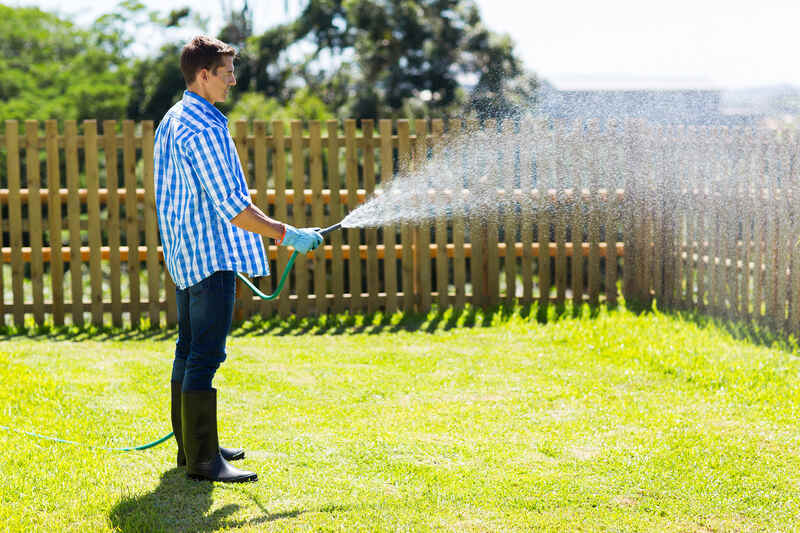
Nurturing a new lawn, managing a dormant one, or dealing with extreme heat are some of the situations that require homeowners to adjust their watering schedules.
New Lawns
To care for new grass seed, you must keep it slightly moist on the surface to help the germination process. If you have a new sod lawn, you’ll have to give it deeper but still frequent watering to help the grass roots bond with the soil below.
Frequent, light watering can help prevent the soil surface from drying out, which is critical for seed germination and sod establishment.
| Watering for New Lawns (First 3 Weeks) |
| Frequency: 2-3 times per day (seeded); 1-2 times per day (sod) Amount per session: 0.1-0.25 inches (seeded); 0.25 inches (sod) Weekly Total: 1.5-5.25 inches (seeded); 1.75-3.5 inches (sod) |
Note: After the first 2 to 3 weeks, reduce the watering to 1 to 2 times per day for seeded lawns and once every other day for sod lawns.
Dormant Lawns
Dormant grass doesn’t need frequent watering, but it shouldn’t be neglected. A light watering every couple of weeks can help prevent permanent damage to the crown (base of the grass) and root system.
| Watering for Dormant Lawns |
| Frequency: Once every 2-3 weeks Amount: 0.5 inches per session Weekly Total: Not needed weekly; occasional deep soak |
Note: The key to protecting dormant grass is to water just enough to keep the roots alive without encouraging new growth.
During Heat Waves (95 degrees Fahrenheit and Up)
Even the healthiest lawns begin to struggle when temperatures start hitting the mid-90s. During extreme heat, watering deeply and more frequently can help your grass resist stress.
| Watering During Heat Waves |
| Frequency: 3-4 times per week Amount: 0.4 inches per session Weekly Total: 1.2-1.6 inches |
It’s best to water your grass early in the morning (between 5 a.m. and 8 a.m.). This way, you can lessen evaporation loss and allow the grass to absorb as much moisture as possible before peak temperatures hit.
Pro Tip: If your grass can’t handle the heat, consider replacing it with drought-tolerant ground covers that can survive scorching summers.
Summer Watering Schedule Examples
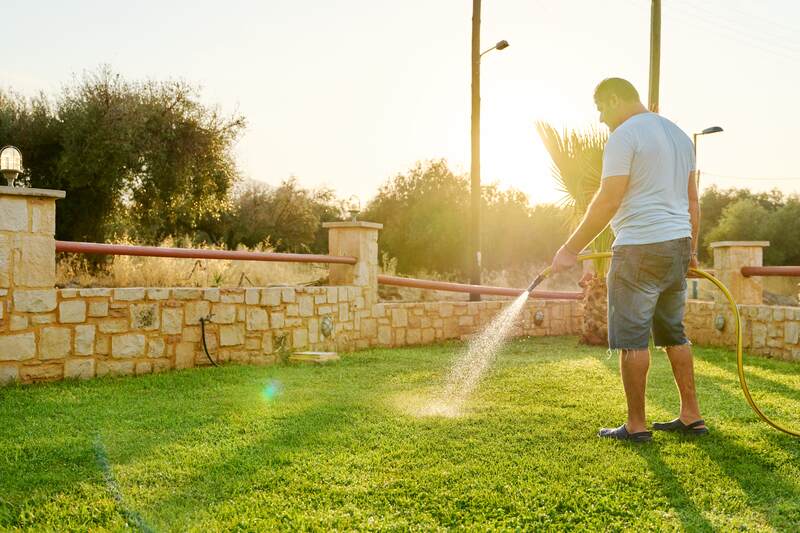
Creating a consistent watering schedule helps prevent overwatering, underwatering, and general lawn stress, especially during summer.
Below are some sample schedules you can use as a starting point.
Example #1
Cool-Season Lawn (Kentucky Bluegrass, Fescue) – Northeast, Loamy Soil
This schedule spaces watering days to allow for soil absorption and prevent disease. Early morning watering ensures minimal evaporation and reduces the risk of fungal growth.
- Schedule: Tuesday, Friday, Sunday – Early morning
- Amount: 0.5 inches per session
- Weekly Total: 1.5 inches
Example #2
Warm-Season Lawn (Bermudagrass, Zoysiagrass) – Southeast, Clay Soil
Since clay soils hold water longer, you can promote deeper root growth with fewer sessions and deeper watering.
- Schedule: Monday and Thursday – Early morning
- Amount: 0.75 inches per session
- Weekly Total: 1.5 inches
Example #3
Warm-Season Lawn – Southwest, Sandy Soil
More frequent but lighter watering is ideal for sandy soil since it drains quickly. Avoid watering during the hottest hours of the day, when evaporation is highest.
- Schedule: Monday, Wednesday, Saturday – Early morning
- Amount: 0.5 inches per session
- Weekly Total: 1.5 inches
Pro Tip: For easier watering, you can install a sprinkler system, which costs $0.29 to $0.48 per square foot for an above-ground setup.
FAQ About How to Water Grass in Summer
Signs of overwatering include yellowing grass, a squishy lawn underfoot, fungal growth, and shallow root systems.
A properly watered lawn will have a deep green color and bounce back when you walk across it, leaving no lasting footprints.
Sunny spots need more frequent watering than shaded areas because they dry out faster. In shady zones, overwatering can lead to fungal problems due to lower evaporation rates.
In areas with watering restrictions, water early in the morning and apply deeper soakings, about 0.5 to 0.75 inches per session, to encourage deep root growth. To take care of your lawn during drought, you can also mow higher and mulch the grass clippings to reduce water loss.
Work on Your Tan, Not Your Lawn
Don’t waste the summer months stressing about your lawn. With a proper watering schedule tailored to your grass type, soil type, and climate, you can help your lawn survive the heat. But if you’d rather spend time on the beach, let a local lawn care pro take the heat and mulch-mow your lawn instead.
Sources:
- “Care and Maintenance of a Lawn after Seeding.” By Debra Ricigliano, certified professional horticulturist. University of Maryland Extension.
- “How to Grow and Maintain a Healthy Lawn.” By Weston Miller, horticulturist. Oregon State University.
- “Irrigation: How to, How Much.” University of California Agriculture and Natural Resources.
- “Lawn Care During a Drought.” By Laura Edwards, extension state climatologist. South Dakota State University Extension.
- “Lawn Watering and Drought Management.” By Dave Minner, extension turfgrass specialist. Iowa State University.
- Sushant Mehan, assistant professor at South Dakota State University. Personal interview.
- “Water Wisely: Start in Your Own Backyard.” University of Minnesota Extension.
- “Watering Lawns.” By Robert Polomski, associate extension specialist, and Debbie Shaughnessy, former HGIC information specialist. Clemson University.
Main Image Credit: Kirill Gorlov / Adobe Stock
